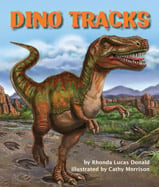Alignment to Standards for WA

| Grade | Number | Standard |
|---|---|---|
| 1 | 3.1.1 | Understands and uses maps and globes to identify major bodies of water and continental land masses. |
| 1 | SS-1.3.1.1 | Understands and uses maps and globes to identify major bodies of water and continental land masses. |
| 1 | SS-1.3.1.1a. | Uses a map or globe to identify the location of the continents and major bodies of water. |
| 1 | SS-1.3.1.1b. | Explains how maps and globes can be used to locate the continents where families live. |
| 2 | SS-2.3.1 | Understands the physical characteristics, cultural characteristics, and location of places, regions, and spatial patterns on the Earthês surface |
| 2 | SS-2.3.1.1 | basic mapping elements such as symbols, compass rose, labels, and a key to read and construct maps that display information about neighborhoods or local communities. |
| 2,3 | 2-3 LS3B | The offspring of a plant or animal closely resembles its parents, but close inspection reveals differences. |
| 2,3 | 2-3 LS3D | Fossils are often similar to parts of plants or animals that live today. |
| 2,3 | 2-3 LS3E | Some fossils are very different from plants and animals that live today. |
| 4,5 | 4-5 ES3A | Different kinds of events caused the formation of different kinds of fossils. |
| 4,5 | 4-5 ES3B | By studying the kinds of plant and animal fossils in a layer of rock, it is possible to infer what the environment was like at the time and where the layer formed. |
| 4,5 | 4-5 LS3D | Fossils provide evidence that many plant and animal species are extinct and that species have changed over time. |